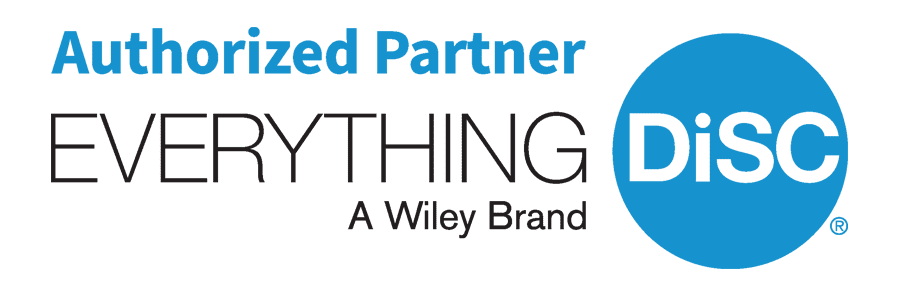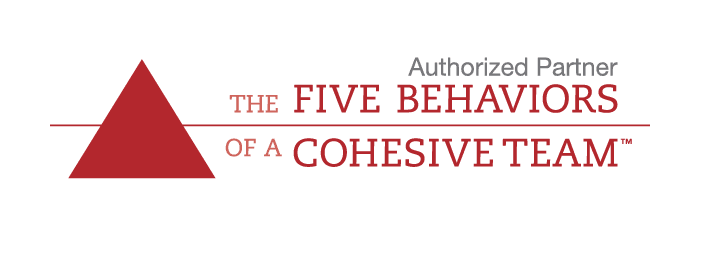Panic Attacks
Panic Attacks
Panic Attacks are episodes of severe, terrifying emotion. They may appear “out of the blue”. If they occur regularly enough they are termed Panic Disorder with or without Agoraphobia. Agoraphobia is a fear of being in place where panic might occur and from where escape is difficult. A supermarket queue is a nightmare to a person with Agoraphobia. Panic attacks may also occur with other forms of anxiety. This article presents answers to common questions about panic.
Questions. Click to jump to text.
How diaphragmatic breathing makes slow breathing easier.
PANIC ATTACKS!
What are panic attacks?
Panic attacks are episodes of severe terrifying emotion. They may have clear, predictable triggers such as having to perform in public. If they occur frequently and ‘out of the blue’ they are diagnosed as Panic Disorder with or without Agoraphobia. Symptoms include:
- Pounding heart or accelerated heart rate
- Sweating (especially of the palms or the soles of the feet)
- Tremors or shaking
- Shortness of breath or smothering sensations
- Feeling of choking
- Chest pain or discomfort
- Nausea or abdominal distress (an unwell feeling)
- Dizziness, unsteady, light-headed or faint
- Feelings of unreality or detachment from self
- Numbness or tingling sensations
- Chills or hot flushes
- Fear of losing control or going crazy
- Fear of dying
Reference: DSM-IV a
The first 11 are harmless physical sensations linked to faulty breathing and arousal. The last 2 are common psychological reactions to the changes.
What causes panic attacks?
Three well-studied observations of people who have panic attacks point to their interacting causes.
Firstly, Panic Disorder tends to run in families. This reflects an inborn tendency of the nervous system to react sensitively to major stressors or other changes.
The second fact noted in many, though not all, people with Panic Disorder is that deliberate, forceful hyperventilation (rapid, shallow, upper-chest breathing) can bring on attacks. The speed and depth of more subtle forms of faulty breathing such as habitual breathing rates above the normal range, excessive sighing associated with low mood, increased frequency of erratic stop-start breathing or gasping – all raise the chances of panic.
With too much air, carbon dioxide levels drop as it becomes crowded out by large amounts of oxygen. Far from being just a waste gas, carbon dioxide acts as a trigger for the body to take up oxygen out of the bloodstream into its organs and tissues. This failure of oxygen to be taken out of the blood stream causes complex changes in body chemistry. A slight variation in the balance of oxygen and carbon dioxide is all it may take to bring on the puzzling physical feelings of panic attacks (see list above). The sensations following rapid gasping as you blow up a balloon too quickly are an example of the link between cause and effect.
Thirdly, people with Panic Disorder react to the physical effects of bad breathing and/or their strong nervous system reactions with frightening thoughts. Common but mistaken ideas about panic are:
“I’m having a heart attack!”
“I’m having a stroke!”
“I’m about to drop dead!”
“I’m going crazy!”
Most people report a build-up of life stressors in the year or so before their first unexpected panic attack. As part of the normal stress response, physical and psychological resistance wears down. Any stress-induced breathing changes or genetic bias towards intense anxiety symptoms are more likely to appear. Instead of being passed off as unpleasant but harmless reactions, fearful concerns develop. A classic vicious cycle of anxiety, physical symptoms, fears of something bad happening and in turn more anxiety is completed.
Undetectably the body stores in its ‘memory’ all the sensations and terrifying reactions that were part of the first episodes of panic. Benign physical changes that anyone may experience at any time such as an unexplained racing heart are no longer ignored. A single unnoticed physical sensation or earlier related worry can by unconscious association start the cycle of an attack. This is how Panic Disorder can appear to arise “out of the blue” even when relaxed or for 1 in 4 sufferers while asleep.
Symptoms of panic may feel very bizarre. Panic attacks that seem to come from nowhere can be very demoralizing or even clinically depressing. This depression may need professional help. But panic that develops in the way described above is a distressing physical habit and not a sign of underlying mental illness. Panicky feelings relate to respiration and the balance of gases in your bloodstream and the meaning you attach to the changes – not your sanity.
Around 35% of the general population report one or more panic attacks in the last year. Most can identify situational cues such as public speaking, exams, conflict, loss, prolonged illness or periods of high stress.
But many may go on to develop panics that occur unexpectedly and with the specific high frequency required for the diagnosis of Panic Disorder.
In a town of 100,000 people 3,500 (3.5%) may experience Panic Disorder in their lifetime. Some surveys say the figure reaches 6%. Prevalence since the 1960’s has been increasing. This may be due to the many rapid social changes since then.
Begin by getting some idea of your current breathing rate. It is possibly greater than the maximum normal rate of 15 to 20 breaths per minute. Take random samples of the rate over a typical day. Four 1-minute counts, say at 8 a.m., 12 a.m., 4 p.m. and 8 p.m. should give a fair estimation.
As well, set aside a 10-minute period and count the number of times that you gasp, hold your breath or in other ways breathe erratically. Any loss of rhythm suggests that you need to watch for breath-holding when panic starts. Many people who say they do not hyperventilate tend to go the other way and stop breathing when they begin to panic.
In calmer moments practice slower, steadier rates. Four 1-minute daily periods in which you train yourself to breathe more slowly and steadily should be sufficient. Practice only during panics is unwise.
An easy way to establish a normal pace of breathing is to count 3 seconds as you inhale. Then after a slight pause to raise the level of carbon dioxide count 3 seconds as you exhale. So that you do not go too fast, space each count with a word that takes a second to say e.g. “Slow and steady …1 thousand, 2 thousand, 3 thousand…” as you breathe in, pause and once more as you breathe out. This sets up a calming six-second cycle of breathing.
Do not expect success without this practice. Within a week or two you will be breathing more slowly without thinking. Less than 20 breaths per minute is a good target rate. 8 to 12 is excellent. The average for an adult male is 15 breaths per minute. For an adult female it is16.
10-minute daily checks for unsteady breathing over 2 weeks are recommended. With the increased awareness this exercise brings it will be much easier to quickly notice, then correct, any tendency to lose rhythm.
Refer to the list of symptoms for panic above. Recall the usual order in which your particular set of symptoms appear. First might be an unwell feeling in the stomach; second, heart changes; third, hot flushes and so on.
At your first warning of panic apply slow, regular breathing in the ample time you have before it rises to a ‘full-blown’ state (around 4 or more symptoms). The cycle referred to earlier is broken. ‘Body memory’ is re-programmed. As you become convinced that something as deceptively simple as proper breathing makes you feel in control, old frightening thoughts start to disappear. (Armed with a reliable weapon against panic you will then be more confident about facing those events and situations that have been associated with uncontrollable panic. This can be done in a gradual, step-like way. Advance only when you are sufficiently relaxed after a number of trials at each step.)
Any future return of panic may be due to: applying the above too little or too late; not pausing mid-breath; or uncontrolled gasping. Re-apply the technique of aborting the first one or two symptoms as practiced as soon as they appear. In this way ‘full-blown’ panics can be permanently dispelled.
If you need more information or assistance than these notes provide consult a mental health professional who specializes in the management of anxiety problems.
You will be asked if your doctor has cleared you of medical conditions that mimic panic e.g. thyroid problems. Panic reactions to drug and alcohol use or withdrawal, high caffeine intake (e.g. coffee and cola) and chemical exposure are checked for.
An aim of the first session will be to see if the panics are tied to any distinct anxiety conditions. Agoraphobia (fear or avoidance of places in which escape is difficult should panic occur) and Social Phobia (fear or avoidance of scrutiny and humiliation) are examples. Any co-existing depression is also addressed.
Therapy involves education about panic attacks and breathing retraining to eliminate their symptoms. Once you are confident that you can control them via slow, regular breathing gradual facing of any previously avoided situations follows. If the panics relate to aspects of other anxiety conditions (e.g. in response to the disturbing memories of Post-Traumatic Stress Disorder) additional psychological techniques may be suggested.
Around 35% of people with Panic Disorder respond permanently to brief standard therapy. For a lot of people it remains a relapsing condition. They may benefit from medication and/or occasional returns to therapy. But with knowledge of its nature and management recurrences are more easily handled. The number of sessions varies. But if the earlier strategies are practiced and applied correctly, 2 to 4 visits may be all that is needed before uncompounded panics are eliminated.
Main Points:
- Slow, steady breathing is central to controlling panics.
- A calming six-second breathing cycle is the most useful technique for stopping panics.
- Apply this at the first warning sign to prevent full-blown panic.
- Don’t hold your breath. Remember to breathe!
How diaphragmatic breathing makes slow breathing easier.
Notice how babies breathe. They get maximum efficiency from their lungs with deep, tummy breathing. To see if you breathe deeply, place one hand on your stomach. Put the other on your upper-chest. Take in a big breath. Deep breathing shows as your tummy hand moving first. Your diaphragm is doing the work. If the hand on your upper-chest moved first (or if both did) you are probably a shallow breather. Under stress or as a panic rises you only get about 2/3 to a 1/2 of your body’s oxygen requirement.
Lie on your stomach on a firm surface with your forehead resting on your hands. Compare your usual style of breathing with the diaphragmatic type that this exercise forces your body into. It is virtually impossible to breathe the wrong way with your upper-chest muscles locked in this position.
If your breathing feels different you have been breathing in a potentially stressful way.
Practice stages of more natural tummy breathing – lying on your back, then sitting, standing and while doing everyday things like watching TV – then under stress. There should be little if any movement of your upper-chest.
With occasional checking and practice over a few weeks it becomes automatic. The odd twinge as chest muscles shorten and as tummy muscles lengthen is normal. The heart has less work to do. So blood pressure drops a little. Just two deep breaths will lower it by 2 mm of mercury instantly!
Tummy breathing makes it much easier to breathe slowly when you first feel panic. It allows you to use the full three thirds of your lungs rather than just the top one third. The greater volume means less effort at slow breathing. Slow and steady breathing is central to aborting panics.
There are a couple of bonuses to tummy breathing. Chest muscle tiredness is reduced. So too are chances of infections encouraged by stale air in the lower part of the lungs.
It is not so much deep breathing itself that is calming. It simply allows you to breathe more slowly and steadily. So do not be too concerned if mastering tummy breathing proves too difficult. Aim to breathe slowly and steadily – even if you continue to use your upper chest.
These notes are not a substitute for initial evaluation by a medical practitioner
September 19 1997 revision.
Copying and distribution without charge is encouraged.
Frank McDonald
Psychologist
Townsville General Hospital
PO Box 670
Townsville Q.4810
AUSTRALIA




